The Five-Minute Stitch! EP29 – Video Challenge Day 4
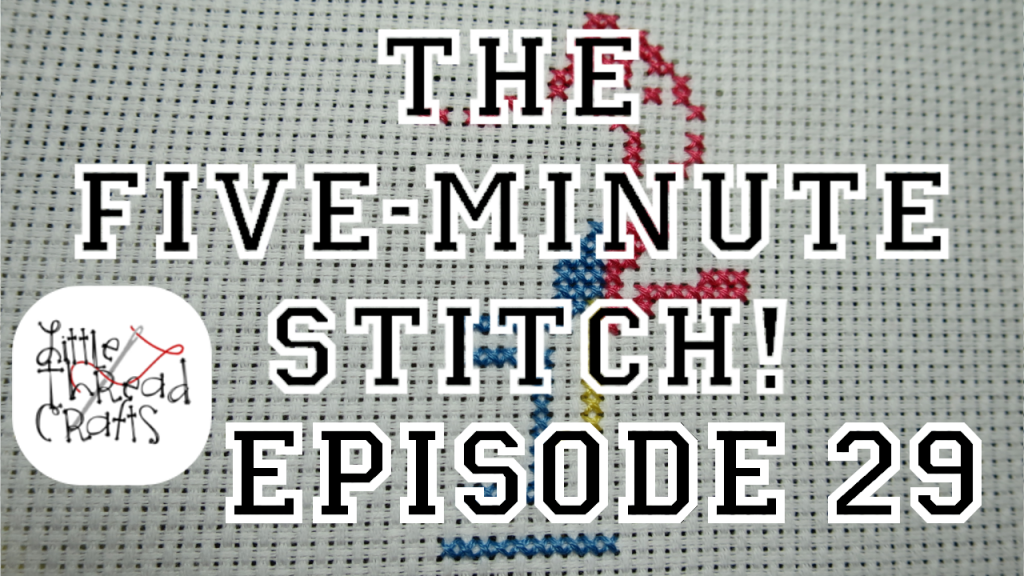
Welcome to Episode Twenty-Nine of The Five-Minute Stitch!
On today’s Five-Minute Stitch, I continue on with the 30 Day Project and talk about how I like to stitch my charts!

Welcome to Episode Twenty-Nine of The Five-Minute Stitch!
On today’s Five-Minute Stitch, I continue on with the 30 Day Project and talk about how I like to stitch my charts!
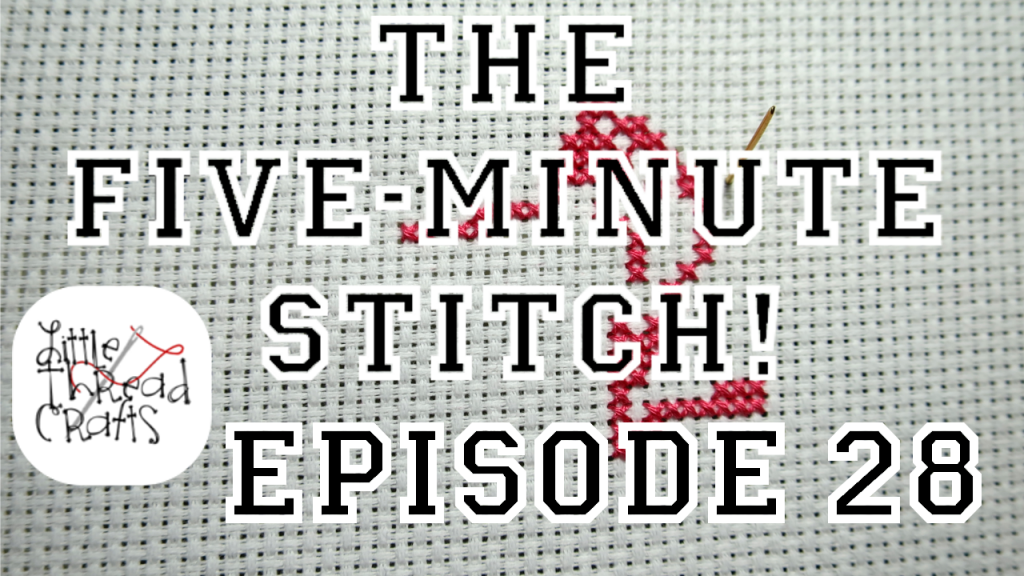
Welcome to Episode Twenty-Eight of The Five-Minute Stitch!
The Five-Minute Stitch is back after a long hiatus! Here’s to hoping I can get these back on a regular schedule again. I hope once NaBloPoMo’s over that I can still keep the videos up to three times a week!
» Read more
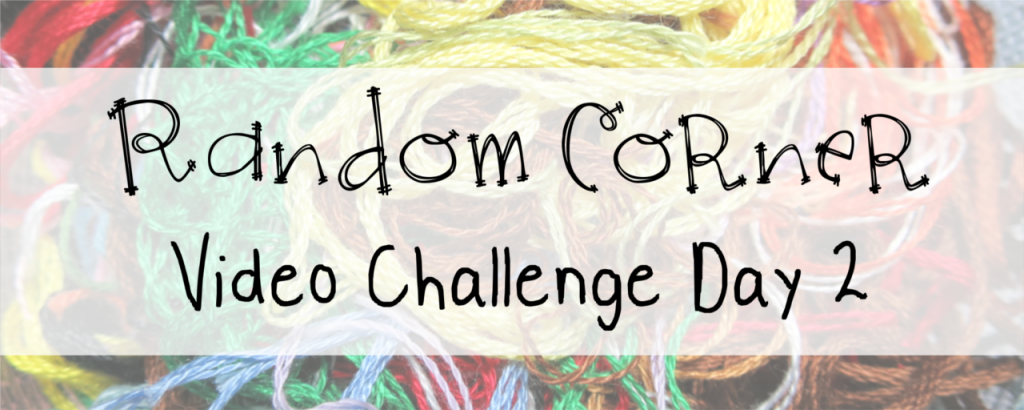
Have a little sort of Random Corner video! I figured since I’ve got all my stitching stuff together and organized and my desk all set up, I’d show you guys what my stitching area looked like!
—————————————————————————————————–
By the way – to keep up on Little Thread Crafts stitching news and get pictures, updates, and more that don’t appear on the blog until much later, follow me on Facebook, Twitter, and Instagram! I would greatly appreciate it!
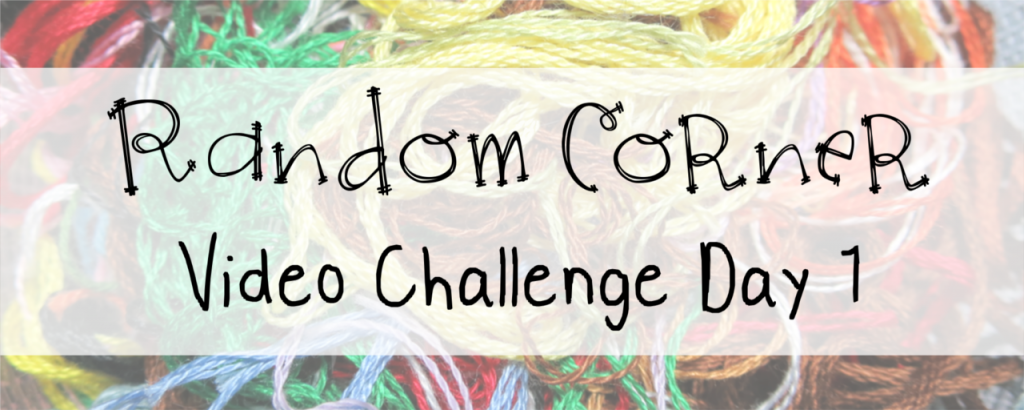
I can’t believe this is the first video I’ve uploaded to the YouTube Channel in several months… I’ve really been slacking.
So National Blog Posting Month has come around once again this year, except this year I’m prepared for it! I’m really seriously hoping I can get a video up every day alongside an article on the blog… wish me luck?
—————————————————————————————————–
By the way – to keep up on Little Thread Crafts stitching news and get pictures, updates, and more that don’t appear on the blog until much later, follow me on Facebook, Twitter, and Instagram! I would greatly appreciate it!
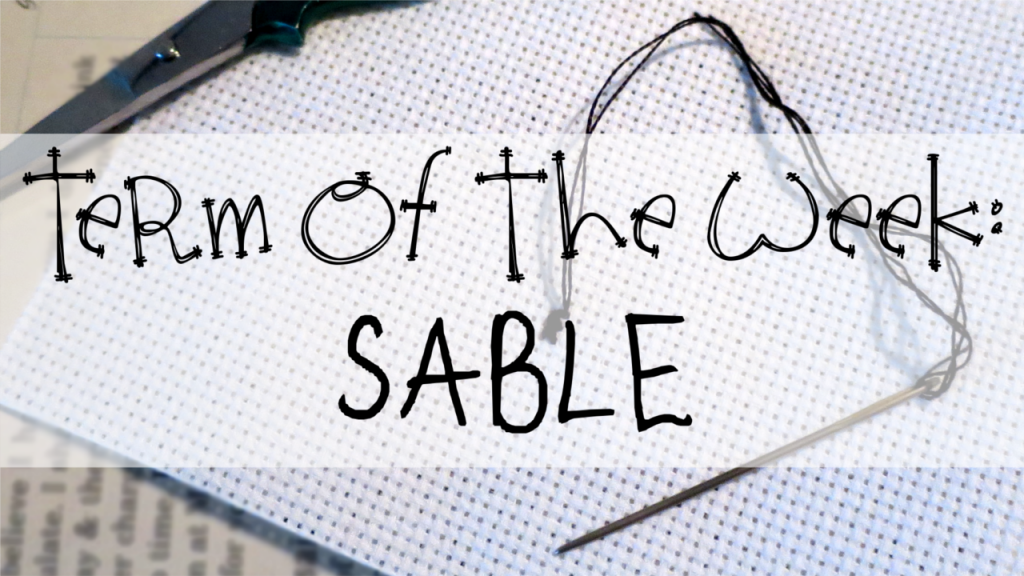
We choose another very popular acronym out of our stitchy bag for this week’s Term of the Week! This acronym is much more well-known and popular than SINS.
Unlike SINS, SABLE is not a real word (okay I take that back, it’s some kind of animal) but to stitchers it is an acronym that has a pretty big meaning. SABLE stands for Stash Acquired Beyond Life Expectancy.
The big thing about cross-stitch and stash is that stitching takes time, and any chart you buy may never be stitched. Even an extremely fast stitcher can take several months to get through large projects. And there are so many beautiful and adorable things in this craft beyond the stitching itself. From hand-dyed fabric to embroidery scissors to needle minders to scissor fobs to thread to lights to stands, a stash cupboard (or bins under the bed, as the case may be) can and will fill up quickly.
Between the charts for the stitching, the stitching itself, and all the lovely accessories to go with the stitching, the ability to stitch and use everything literally extends beyond the average person’s life expectancy. Hence, the word SABLE.
When is this most often used? In the phrase, “I just sorted through my stash! This is definitely SABLE,” usually accompanied by picture of the bed/floor/room being covered in fabric, thread, charts, and kits.
——————————————————————————
“Term of the Week” is a weekly blog post highlighting a new word or phrase commonly used among cross-stitchers but not found in an ordinary dictionary. These posts are to help explain the words’ meanings in context and provide a resource for anyone wondering what a term like “frogging” means. Check back every Thursday!
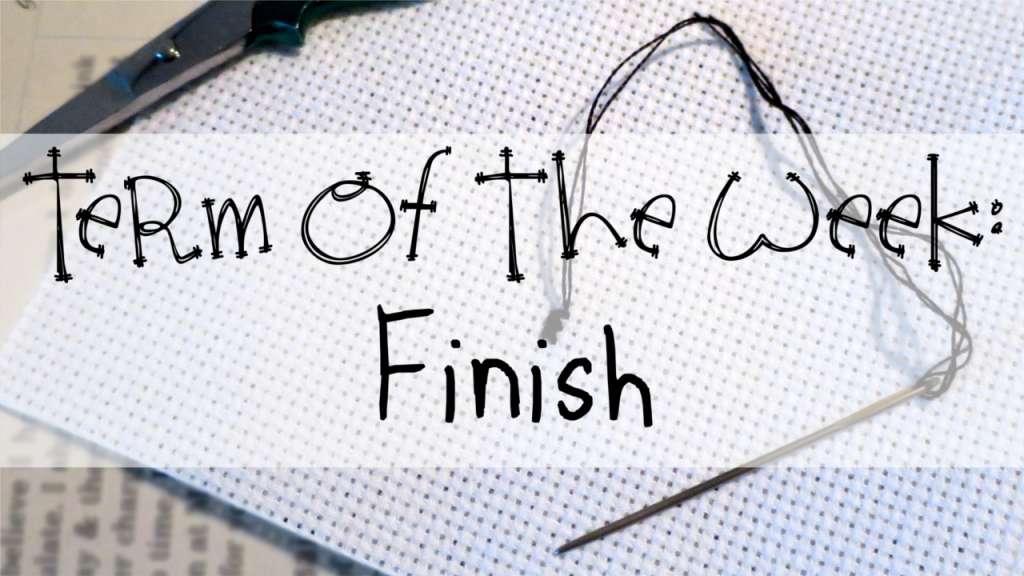
Today’s Term of the Week is one used by all stitchers! It’s a lot like the term Kit by the fact that it is used as both a noun and a verb. It’s actually a very basic term used in hundreds of other applications in the English language, but I thought I should go over it regardless. 🙂
A Finish is a term used to described a completed cross-stitch project. It can be used interchangeably as a noun and an adjective, like “my newest finish” or “my finished Love Bug piece.” Whenever someone talks about their finish or their finishes, they mean they have a project that’s been completed! I use it most frequently as “my finished piece”, because I refer to my cross-stitch projects as cross-stitch “pieces” a majority of the time.
To Finish is exactly what it sounds like, and is the exact same usage as it would be for anything else. For example, “I finished my latest project last night!” It also usually encompasses a sense of pride because you managed to finish the project in question and create a keepsake that will last for generations to come!
——————————————————————————
“Term of the Week” is a weekly blog post highlighting a new word or phrase commonly used among cross-stitchers but not found in an ordinary dictionary. These posts are to help explain the words’ meanings in context and provide a resource for anyone wondering what a term like “frogging” means. Check back every Thursday!

Term of the Week is back, with some brand new terms that every stitcher, beginner to advanced, should know!
The first term we’re going over this week is a term you will run across constantly in cross-stitch. The term has evolved to mean several things, and is also used as a noun and a verb!
A Kit is a prepackaged cross-stitch supply. A kit comes with a charted design, aida fabric, needle, all the colors of thread you need, and instructions telling you how to get started, how to stitch, and how to finish the project. Depending on the size of the project, sometimes kits even come with sticky backing and a frame to finish the project yourself. Generally those who get started into cross-stitch start with kits, because all the supplies are already there.
Some kits are different than others. You can find kits for cookie jars, pot holders, picture frames, bookmarks, iPhone cases, hanging frames, and many other actual items. Other kits come with the charts and instructions like a kit, but gives you the option to choose fabric and colors.
To Kit is a verb used to describe when someone has collected all the materials they need to start a project, such as “I kitted up my HAED last night.” Generally, people pick out the fabric they want to use, such as a hand-dyed aida fabric, pick out their colors, wrap them up in bobbins and organize them, pick out their needles, get their hoops or scroll frames or Q-Snaps ready, and get it all put together so they can begin working on the project. It’s the same principle as buying an actual kit, which is why they call it “kitting.”
The cross-stitch community is evenly divided on their feelings for kits. Some, like me, love kits because you don’t have to worry about buying any supplies, and they’re perfect for small projects. Others hate kits and will only ever buy charts and leaflets, because there is never enough thread to finish the kit and they don’t like having to buy everything, they’d rather pick out fabric and colors themselves.
——————————————————————————
“Term of the Week” is a weekly blog post highlighting a new word or phrase commonly used among cross-stitchers but not found in an ordinary dictionary. These posts are to help explain the words’ meanings in context and provide a resource for anyone wondering what a term like “frogging” means. Check back every Thursday!
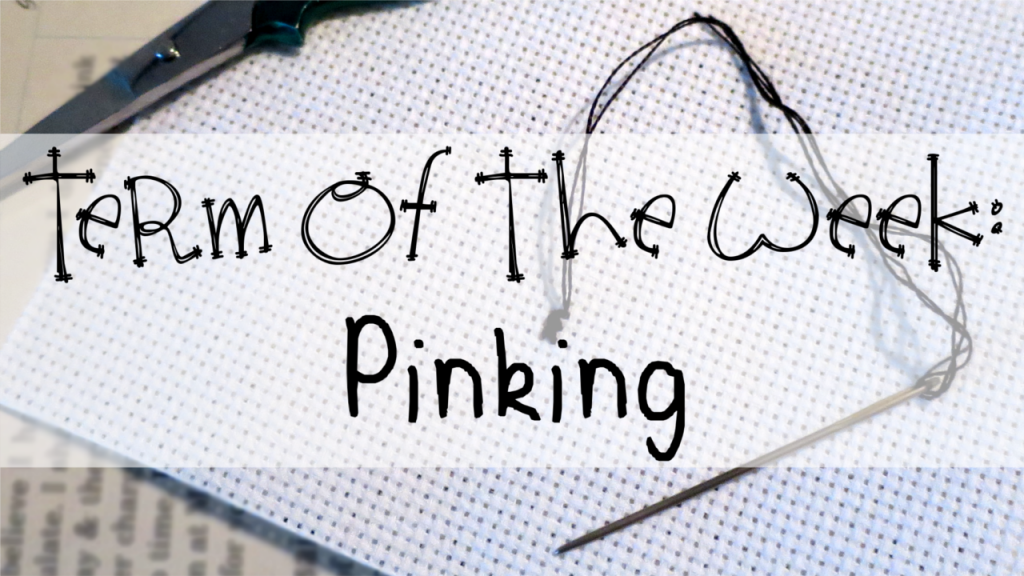
Okay, for real this time, our Term of the Week finally moves away from acronyms into more stitching techniques.
Pinking is actually a technique used throughout a lot of crafts, sewing, embroidery, anything that involves fabric that might easily fray, really.
When someone sits down to begin a project, one of the first steps to prepping for stitching is preventing the edges of the fabric from fraying. That way while they stitch the fabric’s not peeling apart or catching on their thread. There are several ways to do this, some popular ones being taping the edges or sewing around the edges. The other popular technique is pinking.
So how exactly are you meant to ‘pink’ the edges of your fabric? Basically all that’s required is a pair of pinking shears. Pinking shears are scissors with jagged, shaped edges used in crafting for putting edging designs on paper, and for fray check on fabric! They can be found in almost every store that sells scissors since they can be used for so many different things.
All that’s needed to prevent fraying on aida, linen, and other fabric types is to cut an inch into all four sides of the piece. The jagged design around the edge prevents the fabric from fraying and it will be cut away when the project is being framed, so there won’t be any tape to pull off or stitches to remove once the project is finished, with no leftover tape residue if it gets put in storage.
Pinking your fabric does mean that you have to add extra fabric allowance around the edges, however. If you normally give three extra inches for framing purposes, you’re going to want to give a couple more to make sure you can remove the jagged edges made by the pinking shears before you frame. Otherwise, it’ s a very popular method for preventing aida and other fabrics from fraying!
——————————————————————————
“Term of the Week” is a weekly blog post highlighting a new word or phrase commonly used among cross-stitchers but not found in an ordinary dictionary. These posts are to help explain the words’ meanings in context and provide a resource for anyone wondering what a term like “frogging” means. Check back every Thursday!
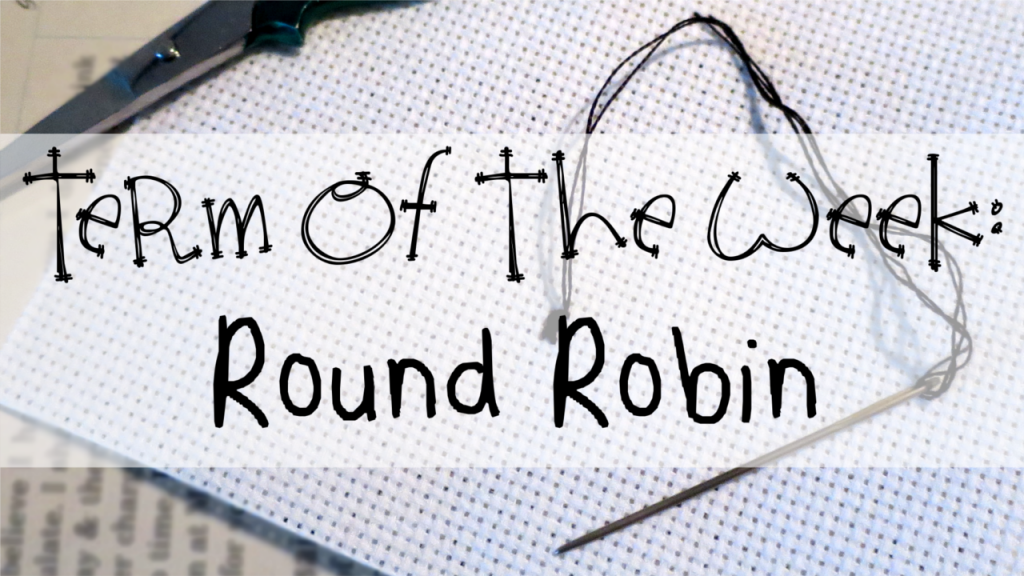
For this term of the Week we finally jump away from acronyms – sort of. I’ve used the actual phrase here instead of the acronym, but Round Robbin is commonly referred to by its acronym RR as well!
Anyway, to the definition: what does Round Robbin mean exactly? No, it’s not referring to a fat bird. Round Robin is an event similar to a SAL, but the rules are a little bit different.
So here’s how a basic Round Robin is supposed to work: A group of stitchers get together and decide to stitch a project. The person chosen as a starter in the group gathers the supplies (chart, thread, fabric, etc.) and then mails it to the first person. That first person stitches the project, replaces any supplies they’ve used up, and sends it along to the next person. This continues until everyone now has a finish and the project makes it back to the RR starter. By the end, the goal is for everyone to have a finished piece with only one set of supplies.
There are many different types of Round Robins, however. One variation that’s the most popular is that there is only one main project and everyone in the RR stitches a small section rather than the whole piece, and at the end everyone has contributed to the RR starter’s main project. The stitchers in the RR don’t have finished pieces of their own but the RR starter now has a very treasured finish with a little piece of every stitcher. This type is most popular for charities and stitching a project for someone who can’t finish it themselves.
Round Robbins are not as popular as SALs and the reason why is the RR being mailed around. Every once in a while you’ll hear stories of the next person on the RR list receiving the project and then never sending it on again. The biggest deterrent for the popular ‘one project’ variation is if the piece is damaged by one stitcher – gets something spilled on it, makes a huge mistake, etc. – and the piece is ruined, all of the stitchers are out of the project and everyone has to start over.
SALs are more popular and preferred because your project is your own project and you don’t have to worry about it getting lost in the mail or another stitcher’s dog tearing it to pieces. However, Round Robbin is still the second-most popular group stitching event where everyone stitches the same project.
——————————————————————————
“Term of the Week” is a weekly blog post highlighting a new word or phrase commonly used among cross-stitchers but not found in an ordinary dictionary. These posts are to help explain the words’ meanings in context and provide a resource for anyone wondering what a term like “frogging” means. Check back every Thursday!
Little Princess: Part 1
We are back onto the Little Princess chart today! We got a lot of stitching done in the last batch and by the end of this one I will be almost finished with everything but the backstitch. Good times!